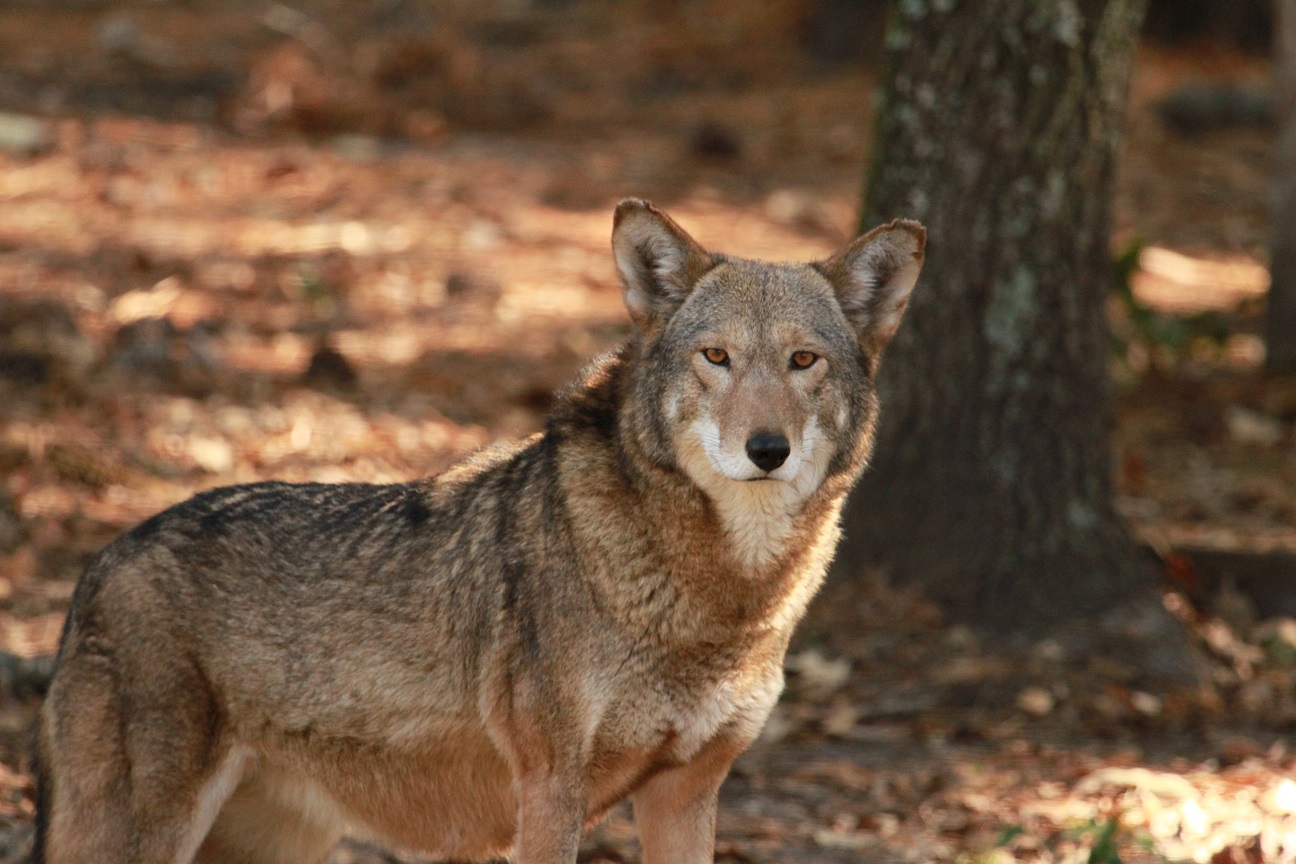
RALEIGH — Hanging on by a Darwinian thread in northeastern North Carolina, the world’s only known wild red wolves may soon get a population boost, with a federal judge ruling late last week that the U.S. Fish and Wildlife Service must again release captive-bred red wolves into the management area.
With only seven collared and about a dozen or so untagged wild red wolves remaining in the management area, 1.7 million acres of public and private land in Beaufort, Dare, Hyde, Tyrrell and Washington counties, U.S. District Court for the Eastern District of North Carolina Judge Terrence Boyle sided with conservation groups, ruling that the agency was “likely” in violation of the Endangered Species Act and must take immediate actions to save the species.
Supporter Spotlight
Fish and Wildlife said in a 2018 federal notice that current regulations limit the release of captive wolves, but Boyle responded that their future depended on it.
“Failing to release additional wolves, from either the captive population or wild population at St. Vincent National Wildlife Refuge, will all but certainly result in the extinction of the red wolf in the wild in North Carolina” the judge wrote in the Jan. 21 ruling. “Preliminarily enjoining defendants from effecting its policy regarding captive red wolf releases is necessary to prevent this outcome.”
Although red wolves are allowed to roam free at the St. Vincent refuge, it is considered habitat for captive wolves to breed.
The Southern Environmental Law Center, representing nonprofit groups Red Wolf Coalition, Defenders of Wildlife and the Animal Welfare Institute, contended in a November 2020 lawsuit that Fish and Wildlife had failed to uphold its obligation under the act to implement management practices to conserve the animals.
The law center asked for the court to order immediate reinstatement of the practice of repopulating the wild wolves with captive-bred wolves. More than 200 captive red wolves are currently held in various facilities throughout the country.
Supporter Spotlight

“Contrary to the Fish and Wildlife Service’s recent actions, this order confirms once again that the Endangered Species Act requires recovery of the red wolf in the wild,” Sierra Weaver, senior attorney at the law center, said in a statement. “The agency has to stop managing for extinction and instead take meaningful action to rebuild the wild red wolf population in North Carolina.”
The Fish and Wildlife Service, through spokesperson Daffny Pitchford at the regional Atlanta office, declined to comment on the ruling.
After being listed as endangered in 1967 and declared extinct in the wild in 1980, four pairs of red wolves were released in Alligator River National Wildlife Refuge in 1987. Captive wolves — including pups snuck into dens when a wild wolf mother was out hunting — continued to be released as part of the recovery program for nearly three decades.
At its height around 2005, the wild population had been estimated to be at least 130 to as much as 150. Despite its steady progress, by 2012 the program was challenged by a series of conflicts: More wolves were being killed by gunshots, poisoned or vehicles, and opportunistic coyotes were breeding with wolves. Meanwhile, public and political sentiment turned against the red wolves, and by 2015, Fish and Wildlife cut back on management strategies.
Boyle also ruled against the agency in a decision in October 2020 in a lawsuit brought by nonprofit Center for Biological Diversity, when he ordered Fish and Wildlife to update its red wolf management plan by February 2023.
In granting plaintiffs’ motion for preliminary injunction, Boyle ordered the Fish and Wildlife Service to develop a plan by March 1, 2021, to resume releasing captive red wolves into the Red Wolf Recovery Area. But he stopped short of mandating a specific number.
“All parties were able to agree that releasing family groups and pup fostering are two of the most effective ways to release red wolves and increase their chance of survival in the wild,” the judge said in the ruling. “The parties further agree that the release of red wolves unprepared to live in the wild fails to further conservation.”
The agency’s plan must include metrics that will be used to measure performance, which must be provided to the court at a joint status update in six months.
“We are grateful that the U.S. Fish and Wildlife Service will finally abide by its responsibility to protect this critically endangered wolf,” said Ben Prater, Southeast program director at Defenders of Wildlife, in a statement. “Releasing wolves into the wild is a common sense, science-backed approach to boost this population and stave off the red wolf’s extinction. While the species has a long way to go, this is a major step in the right direction.”








